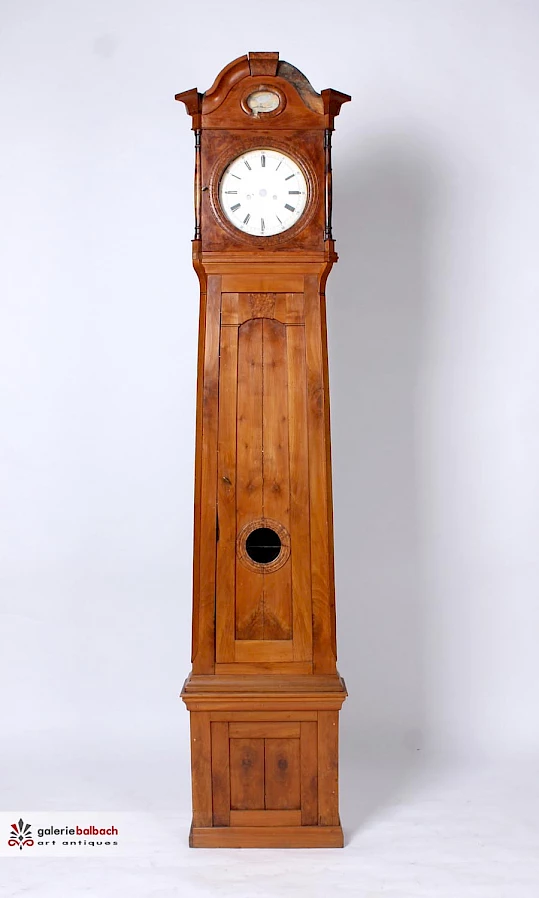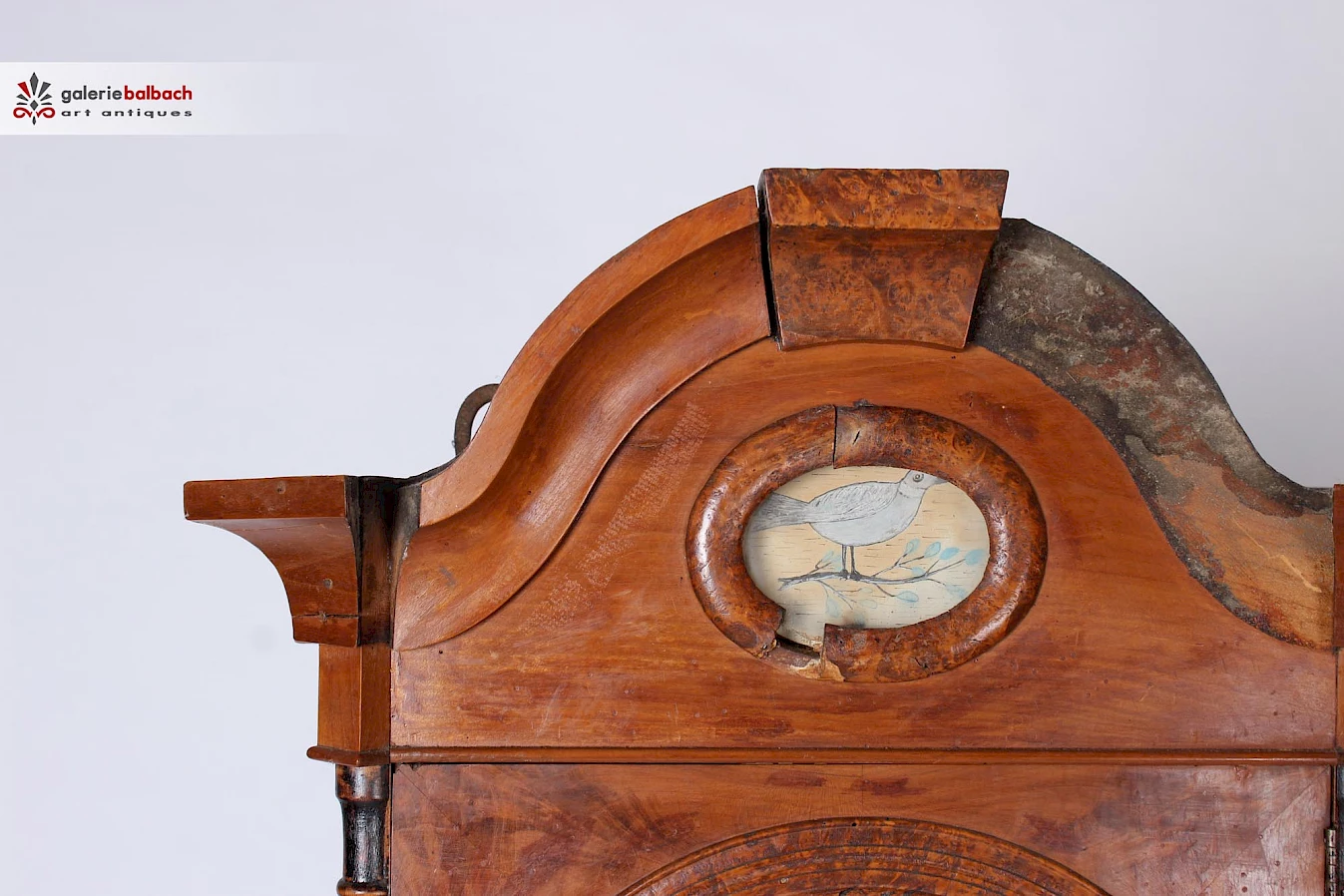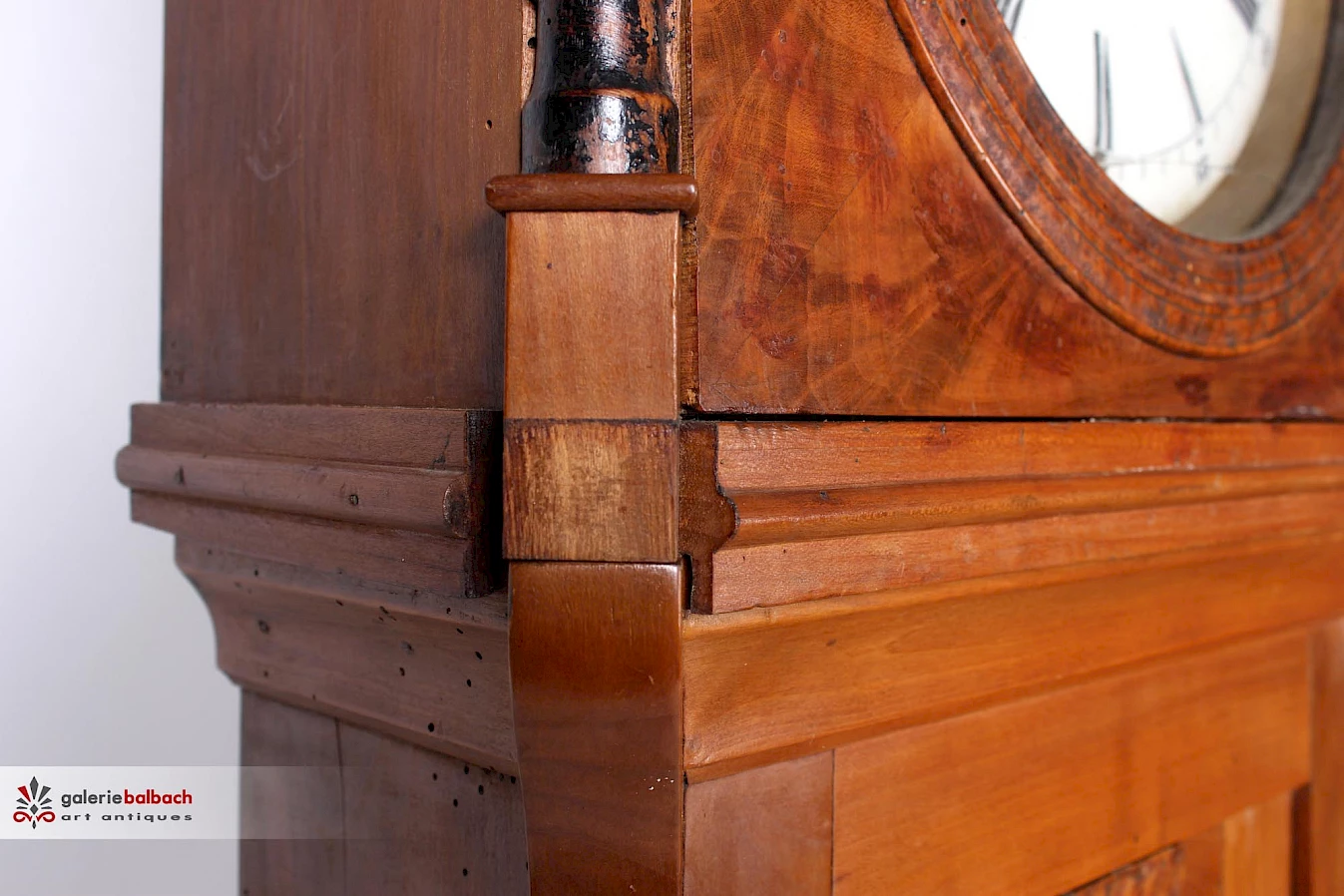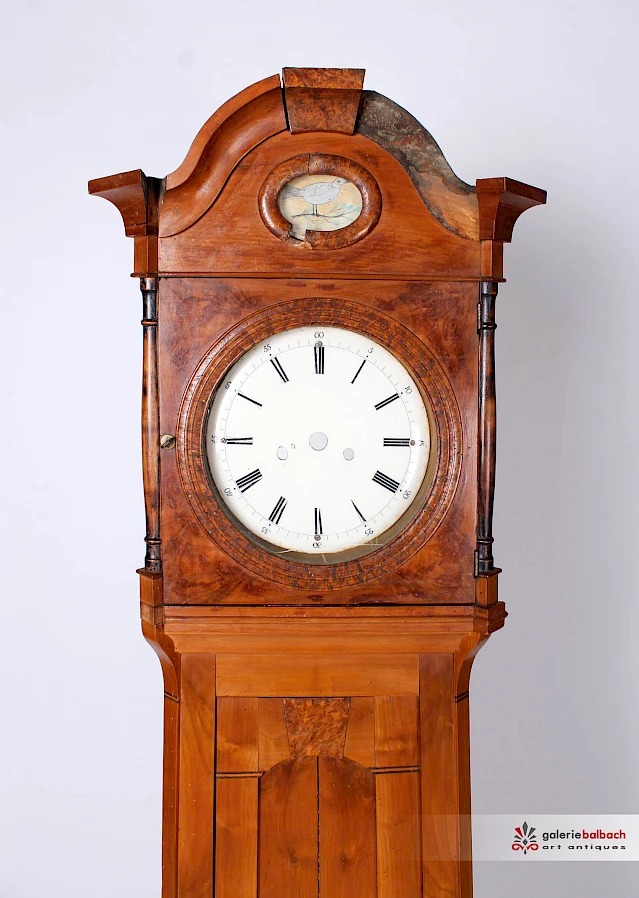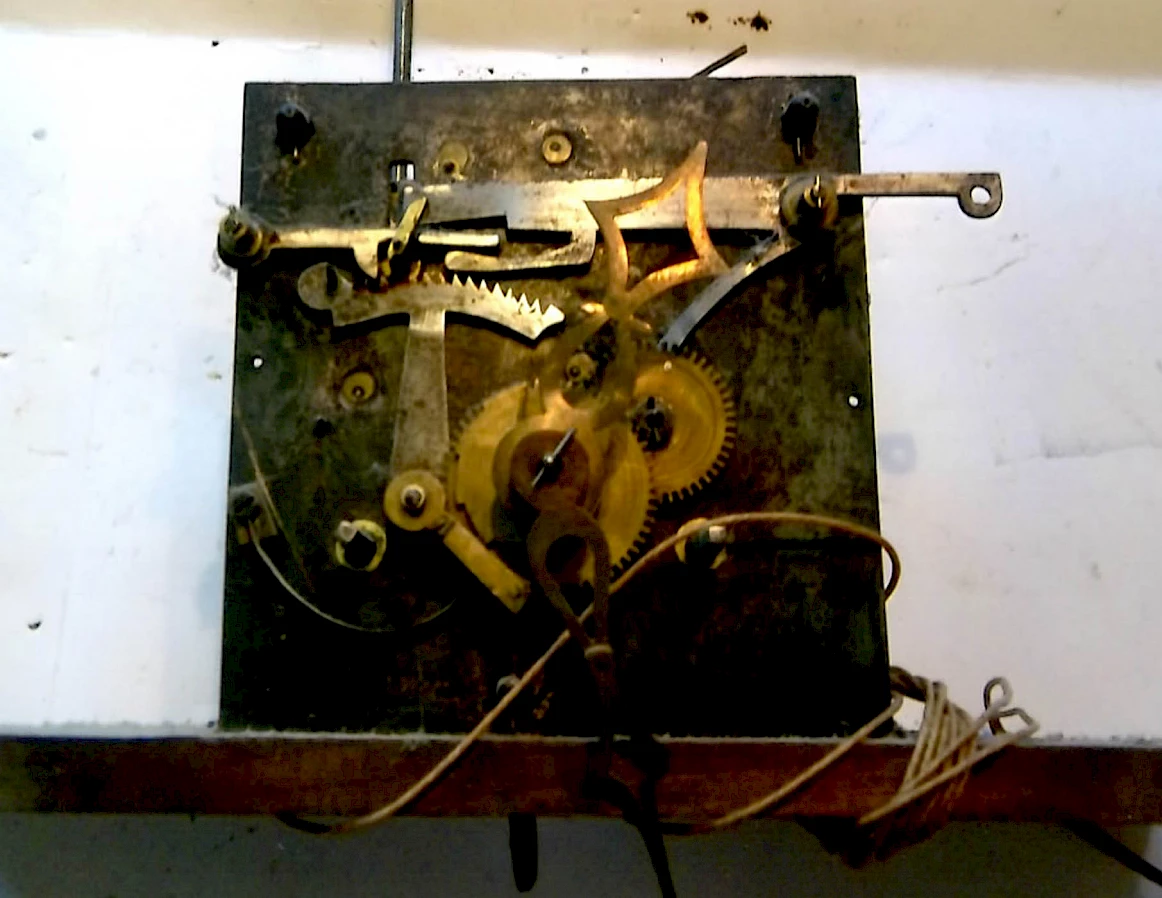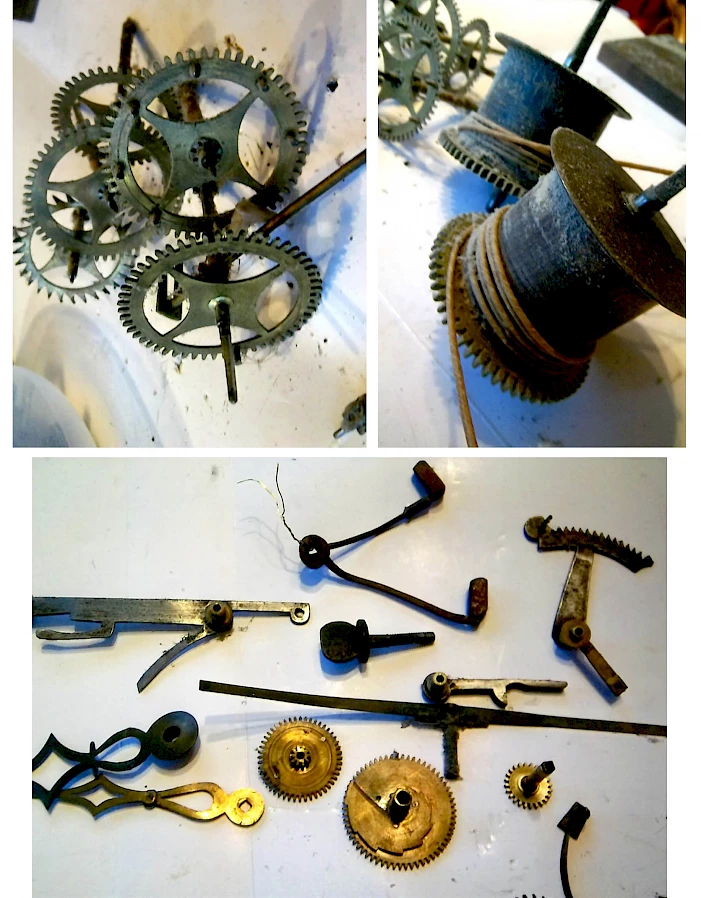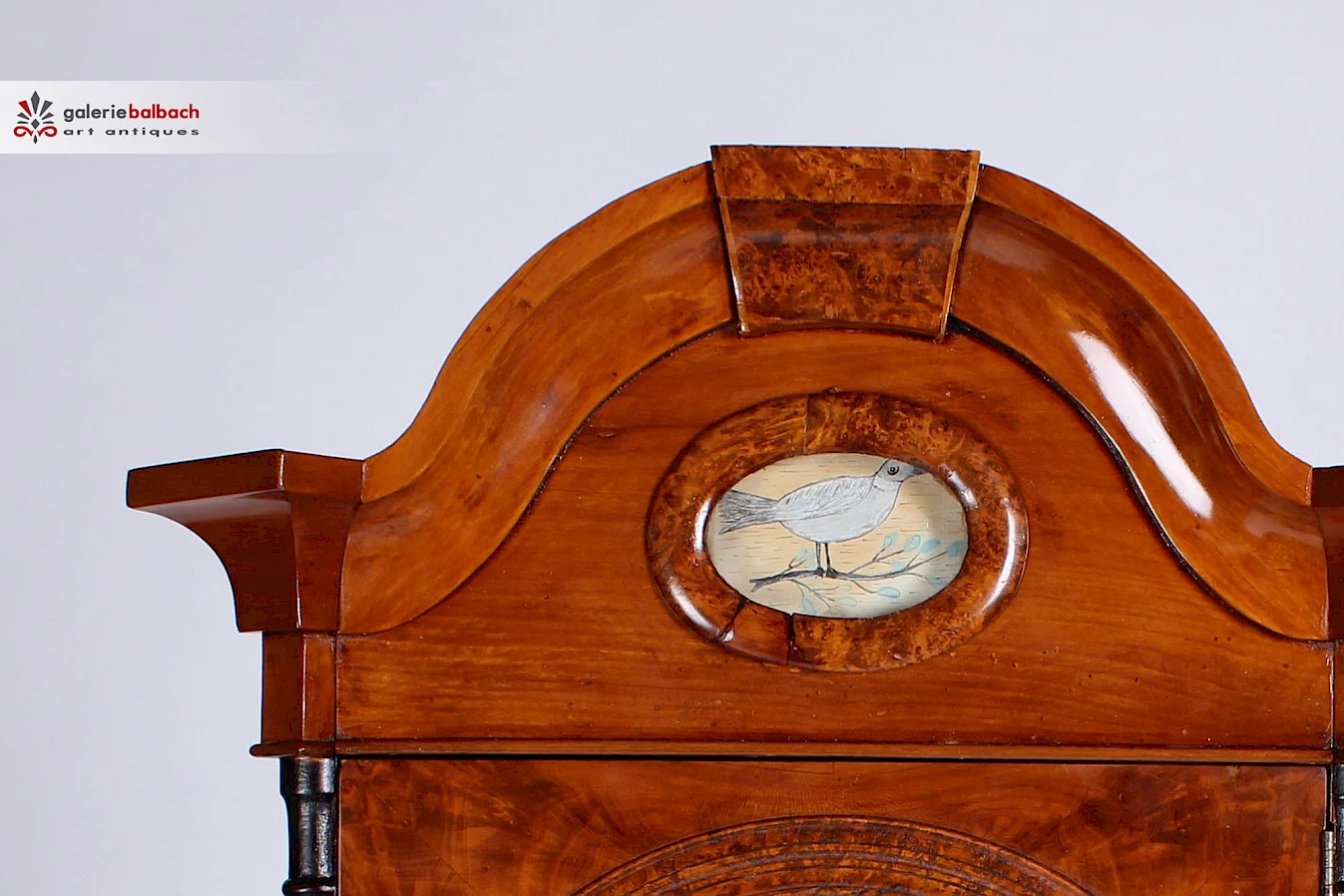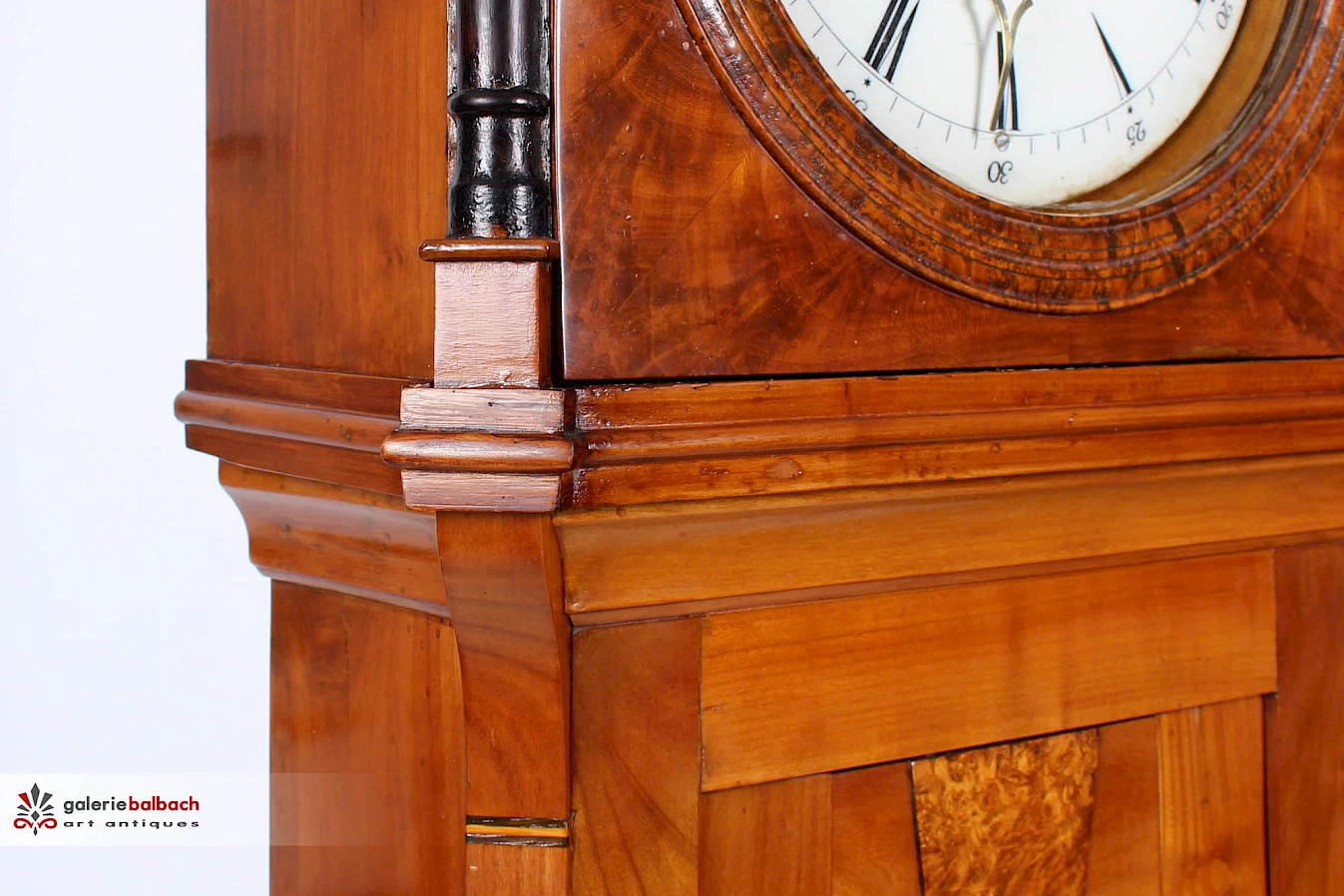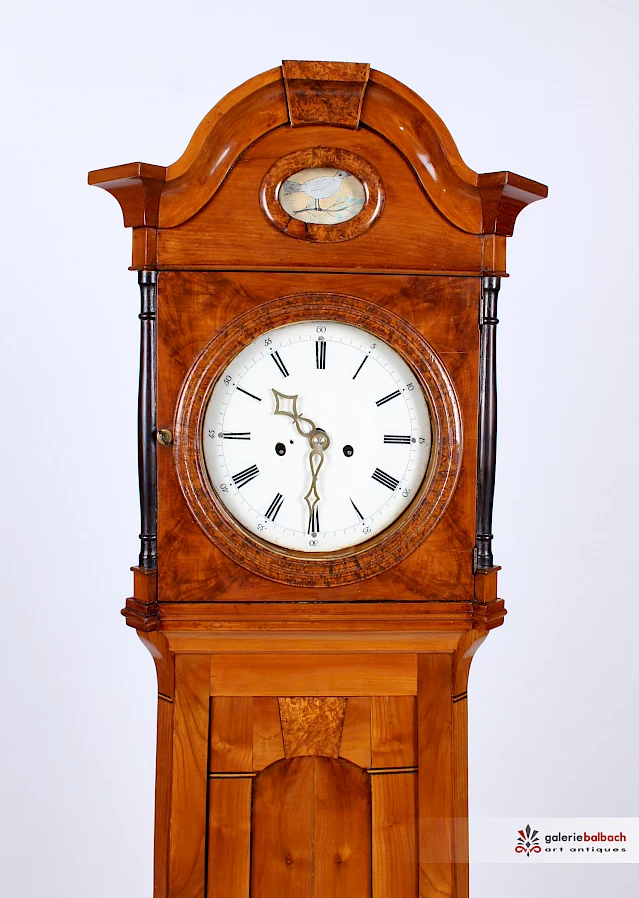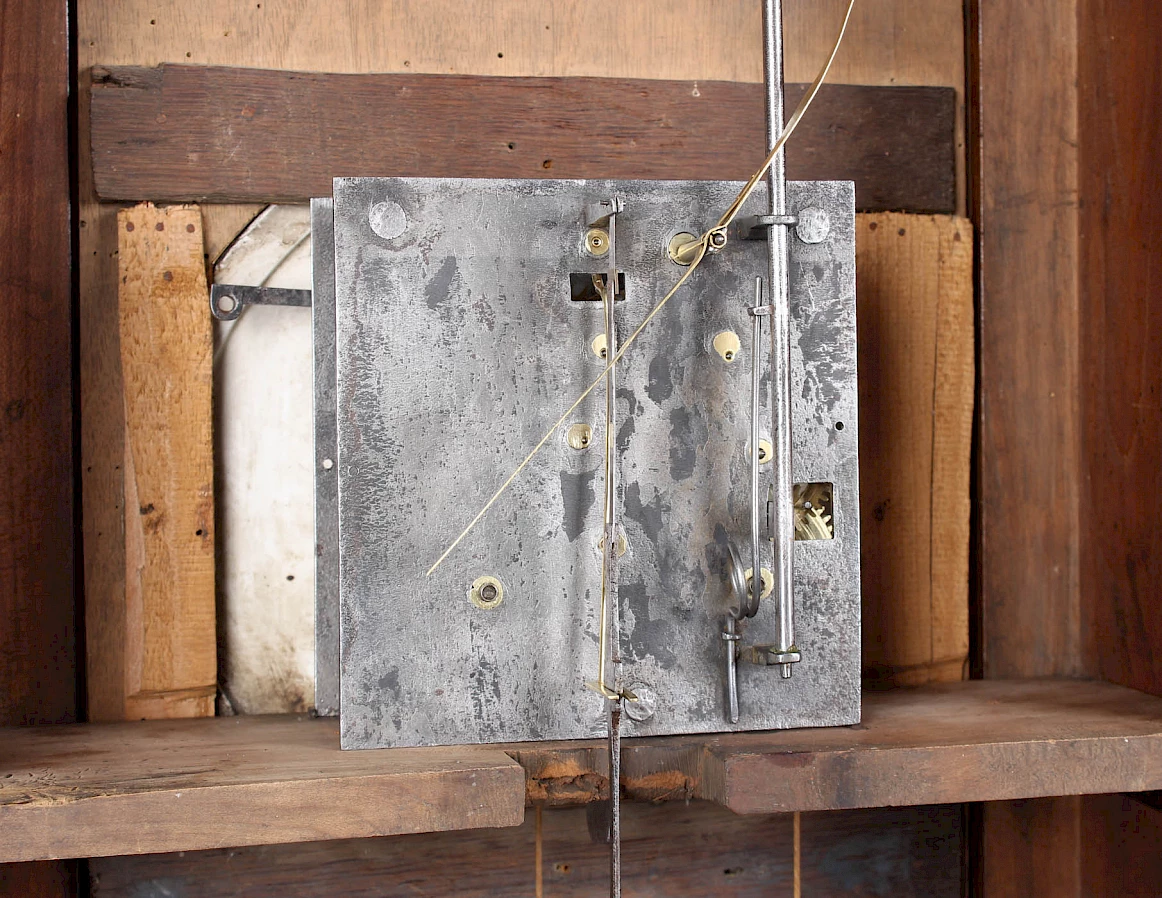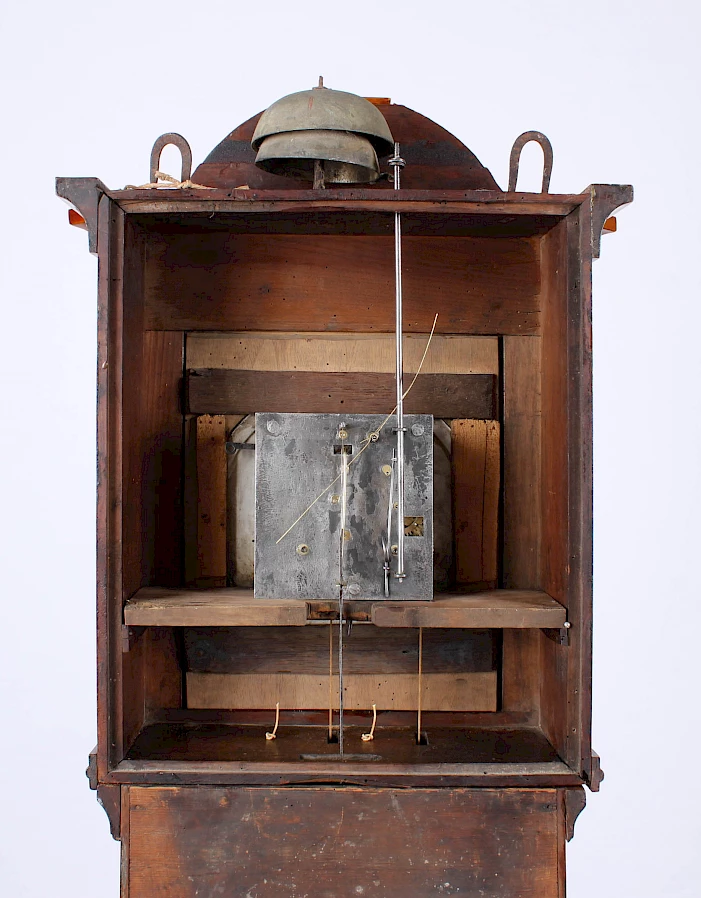Restoring an antique grandfather clock
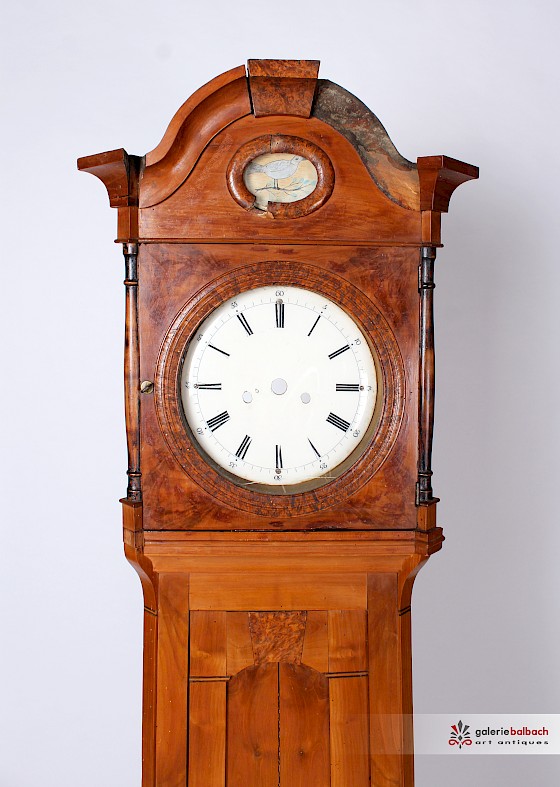 Time and again we hear from our customers how difficult it is to find someone who can take care of both the work on the case and the movement when restoring antique clocks. So of course we are happy and proud to be able to help you in both respects.
Time and again we hear from our customers how difficult it is to find someone who can take care of both the work on the case and the movement when restoring antique clocks. So of course we are happy and proud to be able to help you in both respects.
The clock presented in this example is a Bergisch grandfather clock, made around 1860, with a case made of cherry wood.
The cherry wood was still strong in colour, but the shellac was badly worn, so that the structure of the wood was no longer clearly visible. Some elements were no longer present, you can see this in the photos, especially in the head profile. The back wall was heavily shrinkage cracked.
A dirty clockwork does not start well
Because the clock had not been run for a long time and had not been stored in a clean living room, the movement was very dirty and did not start well. The gears were full of dust and dirt, so that the teeth did not mesh smoothly. The brass parts were tarnished, the iron parts partly corroded. The cord used to suspend the weights of antique clocks is often made of gut. Over the years, this material can become brittle, as in this case.
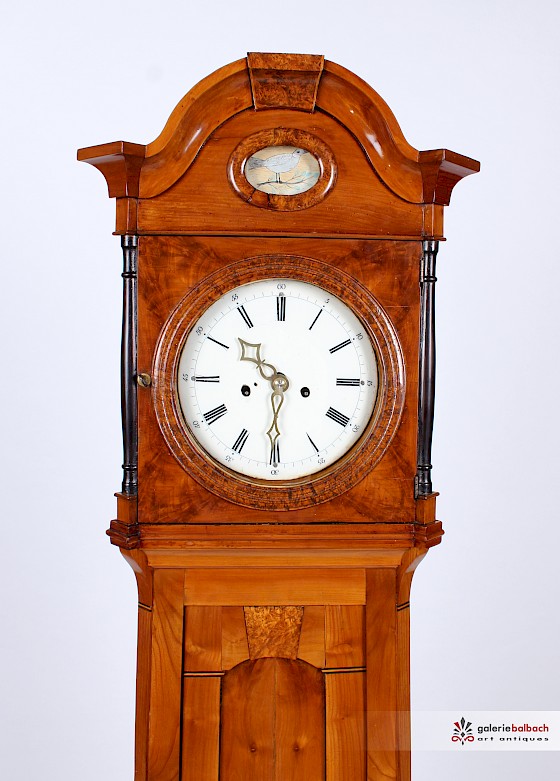
The first step in the restoration was to refurbish the case. We carefully washed off the old shellac polish with alcohol. If one refrains from using abrasives, more of the original patina can be preserved. In this case, we call it a "gentle restoration". In the case of more stubborn dirt, we only use the finest steel wool soaked in alcohol for cleaning.
Unfortunately, this method cannot be used on all antique furniture. If the surface has been chemically lacquered during previous unprofessional restorations, there is often no way around sanding.
Once the surface was removed and the bare wood was exposed, we could start making the necessary additions. We remade parts of the profile and closed all shrinkage cracks with old cherry wood. Smaller gaps could be closed with wax.
The columns to the left and right of the clock face were restored to their old colour with dark stain. The newly polished shellac brings out the grain and colour of the wood again.
The movement must be completely disassembled
The movement of the clock was completely disassembled once in order to be able to clean all parts well. With fine brushes, fine steel wool and polish, dust and stubborn dirt residues could be removed. We refastened the brass sheathing of the weights and replaced the porous gut strings. Then the movement could be reinstalled, the weights hung and the hammers of the two bells straightened.
Do you also have an antique grandfather clock that no longer runs properly?
Feel free to send me some photos by email, WhatsApp or SMS. I will be happy to talk to you about the possibilities of restoring your clock. It is often possible to calculate the cost of a restoration on the basis of photos. However, I would also be happy to come to your home to advise you directly on site.
In addition to restoring antique grandfather clocks, I am also happy to take care of your wall clocks, table clocks or mantel clocks.
Also interesting
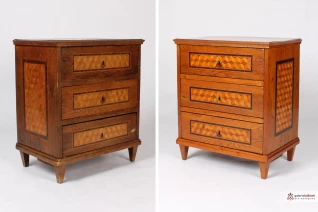
Restoring a Louis XVI chest of drawers
When the wood is cleaned, the inlays really come into their own!
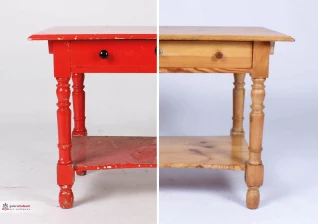
Stripping, sanding and oiling a softwood table
We also restore furniture made of spruce, fir and pine wood!
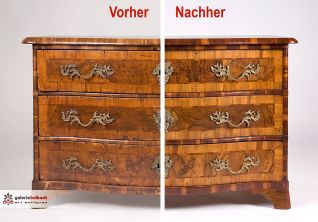
Restoration of a Baroque Commode
Do the drawers of your chest of drawers still work well? No? We'll be happy to take care of it!
